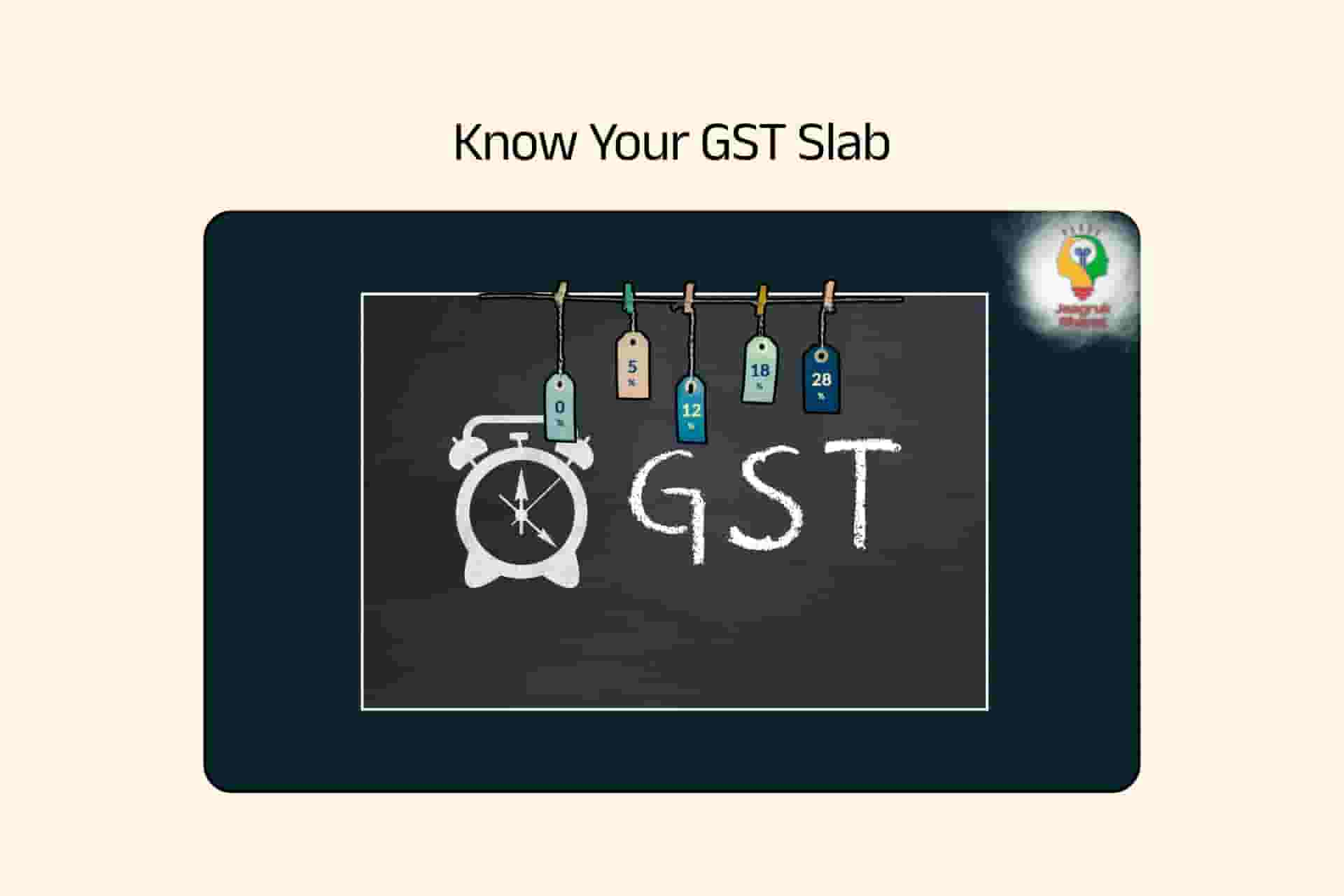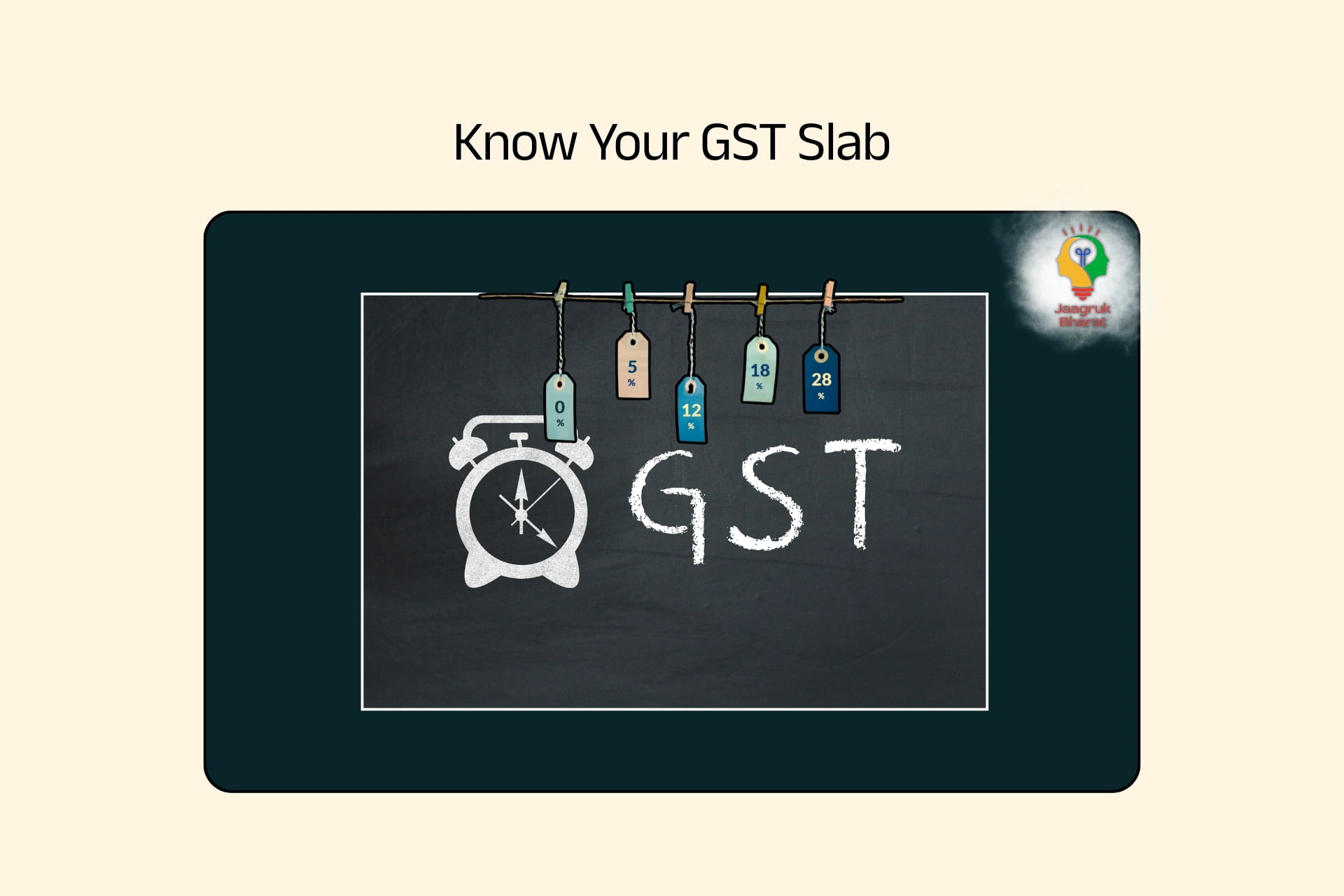Know Your GST Slab: India’s 2025 GST Tax Rate Chart with Cess & Reforms
Updated: 23-09-2025 at 5:49 AM
1k


On 1 July 2017, India implemented Goods and Services Tax (GST) that amalgamated and complied with the tenets of numerous indirect taxes into a single system for ease and transparency. GST is a multi-stage, destination-based tax which is governed by the Union and state governments. It consists of five main slabs: 0%, 5%, 12%, 18%, and 28%. This article looks into the slabs and slab rates currently applied, modified slab rates, examples of different sectors, cess on different slabs, and the structure of GST.
GST Rate Slabs
India has GST slabs of five key tax slabs for goods and services, and each slab ascertains the nature and need of the good or service it covers. We will cover each rate slab and the goods and services that each slab covers.
0% (Exempted Essentials)
Exempted essentials cover goods and services that support basic human sustenance or livelihood. It will also be exempt from GST taxes to achieve affordability for the average man.
-
Unprocessed food: Milk, curd, fresh fruit and/or vegetable, unbranded atta, and pure honey.
-
Agriculture products: Gaga, grains, pulses, rice, and jaggery.
-
Education and healthcare: Basic functions of work.
-
Specific goods: Eggs, paneer, lassi, handloom goods, and native standard instruments.
5% (Basic Necessities)
Items in this slab are taxed at the lowest rates, as they are everyday items and essential services. The aim is to keep these items affordable while raising revenue.
-
Edible items: sugar, tea/coffee, edible oils, fortified rice kernels (one RBIye), popcorn (not popped), life-saving drugs.
-
Transport and facilitation: non‑AC rail, economy air, LPG cylinders.
-
Utilities: coal, building stone, fibre goods.
-
Composition scheme: Some small taxpayers pay nominal rates (1.5%, 5%, 6%).
12% (Standard Goods and Services)
The slab consists of intermediate goods and processed items that are not necessities, but commonly consumed goods. It reflects affordability and provides some taxation.
-
Processed foods and beverages: condiments, fruit juices, packaged pantry items.
-
Consumer goods: bicycles, contact lenses, surgical gloves, aluminium items for the household when a fan is required, bamboo floor.
-
Specialised construction and agricultural inputs: granite blocks, nozzles for drip irrigation.
18% (Majority Rate)
Most goods and services are in this standard slab, which is a normal slab in the GST structure. Consumption is moderating in this slab, which are generally semi-luxury goods and essential services but with value added.
-
Consumer durables: mobile phones, TVs (<27”), washing machines, fridges, geysers, fans.
-
Food and beverage items: caramel‑coated popcorn, chocolate, packaged meals.
-
Services: dining in an AC restaurant, telecom, IT, staying in hotels (₹1,000–₹7,500 per night), business-class.
28% (Luxury and "Sin" Goods)
This highest slab is for goods and services perceived to be non-essential, luxury items, or detrimental to society (and health). It acts primarily as a revenue collection stream, but also is a type of control mechanism to limit consumption following the governments wishes regarding behaviors.
-
Luxury items: vehicles (cars, high-end motorcycles), AC tiles, wall tiles, cement.
-
Sin goods: tobacco, aerated drinks, high-end appliances.
-
Entertainment/extravagant services: gambling, water parks, 5-star stays in hotels.
Also Read: Missed Filing GST Returns? GST Amnesty Scheme Can Help
Cess and Additional Levies
Certain goods within the 28% slab may also be charged a cess as a control mechanism to limit consumption or pay states. These are typically applied to goods that have impacts on society and/or the environment.
-
Tobacco, luxury cars, aerated drinks and jet fuel have cesses applied at high rates - sometimes 200% cesses.
-
Gold jewellery has a specific tax rate of 3% (1.5% CGST + 1.5% SGST), and precious stones are taxed at a specific rate of .25%.
Regulatory Updates & Recent GST Council Items
Each GST Council meeting brings updates, which can impact consumers and businesses. Changes, even if slight, can lead to expanded structural consequences as well as rate. Here is what changed recently that is worth following for 2025.
| Change Area | Description | Updated GST Rate / Reform |
|---|---|---|
| Used Vehicles | Sale of used vehicles by registered dealers now comes under GST; private sales remain exempt. | 18% applicable from late 2024 |
| Caramel Popcorn & Snacks | GST varies based on branding and packaging. | 5% (unbranded), 12% (branded), 18% (caramel popcorn) |
| Disabled Persons' Retrofits | Retrofit kits for specially-abled individuals' vehicles are made more affordable by reducing the tax burden. | Reduced from 18% to 5% |
| Renewable Energy Devices | Solar cookers, water pumps, and sprinklers shifted to a higher tax category. | Increased from 5% to 12% |
| Healthcare Drugs | Cancer-related and life-saving drugs reassessed to reduce treatment costs. | Reduced from 12% to 5% |
| Aviation Turbine Fuel (ATF) | Aviation fuel is excluded from GST to protect state revenue autonomy. | Remains outside GST |
| Compliance Reforms | Digital integration of GSTR‑3B and GSTR‑1A to reduce discrepancies and set stricter return timelines. | New 3-year return filing limit from July 2025 |
GST Structure And Compliance
To enable operation in India, under GST, it is a dual model and there are permits like composition scheme and Input Tax Credit (ITC). It is important to understand how this structure works and is helpful for businesses achieving compliance or to keep compliance.
Tri-fold Dual Model
The dual structure ensures the allocation of revenue between the Centre and the States. GST is divided into:
| Component | Full Form | Applicable On | Collected By | Tax Sharing |
|---|---|---|---|---|
| CGST | Central Goods and Services Tax | Intra-state supply of goods and services | Central Government | Shared only with the Centre |
| SGST/UTGST | State/Union Territory GST | Intra-state supply of goods and services | State/UT Government | Shared only with the respective State or UT |
| IGST | Integrated Goods and Services Tax | Inter-state supply & imports/exports of goods/services | Central Government (then apportioned) | Divided between the Centre and the destination State |
Composition Scheme & Input Tax Credit
The compositional scheme provides easier compliance for small businesses with lower turnover, while ITC provides a way to mitigate the cascading taxation of GST by enabling the recouping of input tax.
-
Composition Scheme: Small businesses with turnovers between ₹1–4 crore use simplified slabs of tax (1.5%, 5%, 6%) and cannot claim ITC
-
Input Tax Credit (ITC): Variable credits can be recouped with GST on inputs to be deducted from GST for final liability. Exclusions apply – motor vehicles, outdoor catering, etc.
Technological Compliance
Digital tools and mandatory systems have streamlined compliance for GST returns and reduced leakages. Compliance and technology has allowed process improvement through automation, systemic requirements.
-
The Invoice Management System (IMS) allows for Form 2B creation for a credit claim.
-
E-way bills capture all inter-state goods greater than the value of ₹50,000 or more and have been only digital since June 2018.
Also Read: Difference Between GST Compensation Cess And Income Tax Cess?
Composition Scheme & Input Tax Credit
The composition scheme is aimed at easier compliance for small business with lesser turnover. Input tax credit avoids cascading effect of taxation on business by allowing credit on input tax.
-
The composition scheme permits a business with turnover upto ₹1-4 crore, to apply simple tax slabs (1.5%, 5%, 6%) for tax purpose. No input tax credit can be claimed.
-
Input tax credit (ITC) allows a business to take credit for Goods and Services Tax charged on inputs to reduce tax liability by reclaiming what it had to pay to suppliers. Exclusions apply to inputs that are themselves goods, like motor vehicles, outdoor catering, etc.
Technological Compliance
Digital technology and mandatory systems have simplified GST returns. E-registration and e-filing efficiency have assisted GST compliance and leakage mitigation furthered by adopting online tools and automated systems.
-
The Invoice Management System (IMS) workflow produces Form 2B for claiming credit.
-
E-way bills have been mandatory for half a decade to track goods for inter-state shipments exceeding ₹50,000 in value. E-way bills have been a digital process since June 2018.
Historical Context & Effect
GST was made possible by a constitutional amendment for the unique structure of indirect taxes that existed prior. It has fundamentally changed the indirect tax landscape in India. It combined a variety of central and state taxes into one simplified tax and has the same logistics for the movement of goods throughout India.
-
The One Hundred and First Amendment of the Constitution of India was introduced as bill to amend and proposed the Goods and Services Tax (GST) on 8 September 2016. Nationally, GST was rolled-out starting July 2017.
-
GST negated state and central taxes like VAT, excise, service tax, entry tax and octroi.
-
State check posts to screen interstate goods were prohibited, fostering a 20% reduction in transit time.
Conclusion
India's GST framework is in a dynamic state continuously evolving for the best balancing of efficiency, equity, and ease of doing business. With an intentional rate categorisation plan, increased technological usage, and government willingness to govern proactively, GST seeks to promote economic growth while providing public welfare. There will be continued changes, and taxpayers have a responsibility to remain informed and compliant.
Get the latest updates on government schemes and policies with Jaagruk Bharat. Join India's biggest Jaagruk Bharat community. Share your thoughts, questions, and favourite topics with us.
0
0
1k
0
0
1k Views
0
No comments available





Our Company
Home
About
T&C
Privacy Policy
Eula
Disclaimer Policy
Code of Ethics
Contact Us
Cancellation & Refund Policy
Categories
Women
Insurance
Finance
Tax
Travel
Transport & Infrastructure
Food
Entertainment
Communication
Government ID Cards
E-commerce
Traffic guidelines
Miscellaneous
Housing and Sanitation
Sports
Startup
Environment and Safety
Education
Agriculture
Social cause
Employment
Disclaimer: Jaagruk Bharat is a private organization offering support for documentation and government scheme access. We are not affiliated with any government body. Official services are available on respective government portals. Our goal is to make processes easier and more accessible for citizens.
All Copyrights are reserved by Jaagruk Bharat